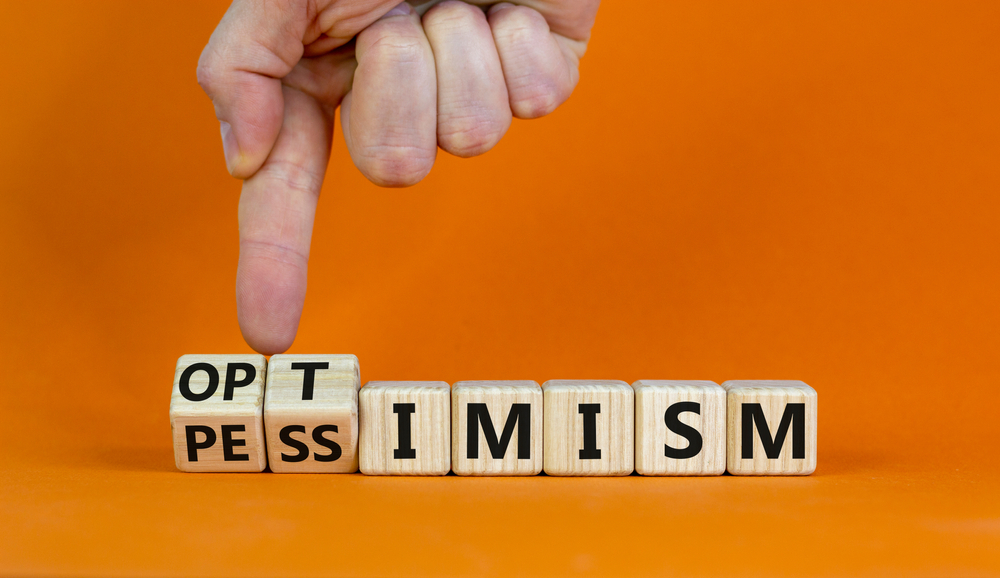 Like many of us, I’m pretty good at deluding myself. For most of my life and much of my career, I confidently self-described as an optimist. Until, that is, I picked up a copy of Dr. Martin Seligman’s groundbreaking bestseller, Learned Optimism, about 15 years ago. I thought I was buying it to learn how I, the confident optimist, could better understand, lead and manage the pessimists I encountered. What I learned instead is that I’m one, too. Life’s funny that way.
Like many of us, I’m pretty good at deluding myself. For most of my life and much of my career, I confidently self-described as an optimist. Until, that is, I picked up a copy of Dr. Martin Seligman’s groundbreaking bestseller, Learned Optimism, about 15 years ago. I thought I was buying it to learn how I, the confident optimist, could better understand, lead and manage the pessimists I encountered. What I learned instead is that I’m one, too. Life’s funny that way.
Don’t get me wrong, self-delusion has its benefits. So does pessimism. But more about Seligman’s work first.
His central insight is that the divide between optimist and pessimist lies in how each explains the bad things that happen to them. When misfortune befalls an optimist, they usually chalk it up to factors that are outside of their control, short-lived, and one-off. The pessimist, however, generally thinks it’s their fault, that it will be long-lasting, and will affect everything else they do. Seligman calls it one’s “explanatory style” consisting of three dimensions: personalization, permanence, and pervasiveness.
It’s probably because I’m capable of deluding myself that I’ve always been drawn to personality tests. I took most of the biggies at one time or another during my career: Myers-Briggs, Hogan, DiSC, Enneagram, Caliper, StrengthsFinder. I grew to enjoy the sting of self-awareness and ego piercing that came with honest appraisal. The same happened when I took the optimism test that appears early in Dr. Seligman’s book. I learned that I was leading the double life of an unwitting pessimist.
Rather than the ever hopeful, dauntlessly can-do executive I believed myself to be, on the Seligman scale I was just a moderately hopeful, average optimist. Ouch. But he was right, and I was grateful for the new insight. Besides, after finishing the book it didn’t hurt at all.
It’s about balance
One reason it didn’t hurt is because the optimism/pessimism divide isn’t an unalloyed good/bad proposition. The evidence is clear that optimism has performance and health benefits, while chronic pessimism destroys potential and can lead to more serious physical and mental health problems. But mild pessimism has its uses, and optimism beyond reason can lead to poor decision-making. In particular, pessimists have a better grasp of reality, accurately judging how much control they have, while optimists believe they have much more control over things than they actually do. Furthermore, pessimists take responsibility for both their successes and failures, whereas optimists often externalize their failures. The proper balance between the two is best captured by Jim Collins in Good to Great with his articulation of The Stockdale Paradox. It’s a concept based on the experiences of Admiral James Stockdale, the highest-ranking military officer imprisoned (for over 7 years) in the “Hanoi Hilton” POW camp during the Vietnam War. According to Admiral Stockdale, “You must never confuse your faith that you will prevail in the end, which you can never afford to lose, with the discipline to confront the most brutal facts of your current reality, whatever they might be.”
It’s about learning to be more optimistic (yes, that’s possible)
The other reason my bruised ego recovered quickly is because Seligman’s book presents not just a deeply researched, easily remembered mental model, but is also filled with specific, actionable steps to take when more than mild pessimism creeps in. I’ve learned from and employed many of his suggestions in the years since, making me a better person and leader. I’d like to think that today I’m more of what Seligman calls a “Professional Pessimist”: someone who possesses a pessimist’s clear-eyed accuracy with an optimist’s confidence in the future.
Extra credit
If you like personality tests as much as I do, in addition to Seligman’s go to www.thetimeparadox.com and take Stanford University emeritus psychology professor Philip Zimbardo’s Time Perspective Inventory. It’s free and fast, with immediate results that help you gauge your general attitudes and perceptions of the past, present, and future.
© 2022 S2P2, LLC. All rights reserved.